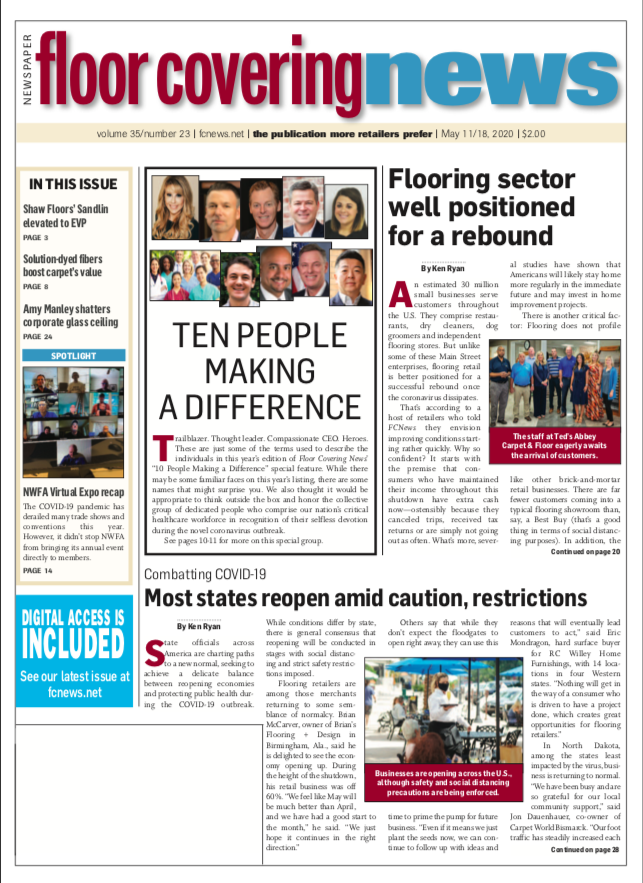By Roman Basi
 The latest round of federal funding in Paycheck Protection Programs (PPP) added $310 billion into the program designed to help small businesses. If you missed out on the first round, do not wait to apply or reapply for this second round as the money goes quickly.
The latest round of federal funding in Paycheck Protection Programs (PPP) added $310 billion into the program designed to help small businesses. If you missed out on the first round, do not wait to apply or reapply for this second round as the money goes quickly.
While $310 billion may seem like a lot of money, the last $349 billion ran out in a matter of weeks. On top of that, much of the funding went to large corporations with high valuations as opposed to the small businesses for which they were intended. I would strongly encourage businesses, especially if you are self-employed, an independent contractor or a freelancer who got a late start on applying for the first round of funding, to seek funding this time around.
So, what’s the best way to get started? One way to prepare is by determining which lender you’ll be applying to and what you’ll need to provide. Unfortunately, requirements differ from lender to lender, but there are some of common items lenders require.
For companies with employees:
- Tax Form 940 or 943 (Agriculture) from 2019, if filed OR
- 2019 Payroll processor records including gross salaries and wages similar to those produced by acceptable payroll providers such as ADP, Paycom, SAP, Ceridian, Intuit INTU/Quickbooks, Paylocity, Workday WDAY, Paychex PAYX
- 2020 Tax form 941 or Payroll processor records for the period between Feb 14-29, 2020
For sole proprietors or self-employed without employees
- 1040 Schedule C, if filed for 2019 OR
- Draft 1040 Schedule C for 2019 if not filed
- Income and Expenses (Profit & Loss Statement)
For independent contractors
- Form 1099-MISC for 2019, for services rendered as an independent contractor
Millions of Americans have received critical funding since the program was launched. The treasury Department and the IRS recently released state-by-state statistics for economic impact payments (EIPs). As of April 24, there were 88 million individuals who received payments worth nearly $158 billion in the first three weeks the program has been up and running. As said IRS Commissioner Chuck Rettig stated, “The IRS, Treasury and partner agencies are working non-stop to get these payments out in record time to Americans who need them. Tens of millions of people across the country are receiving these payments, and millions more are on the way. We encourage people to visit IRS.gov for the latest information, FAQs and updates on the payments.”
Mind your losses
The IRS recently released several notices and revenue procedures providing guidance on obtaining tax relief under the CARES Act for taxpayers with net operating losses. (Revenue Procedure 2020-24 provides guidance to taxpayers with net operating losses that are carried back under the CARES Act.) The guidance provides procedure for:
- Waiving the carryback period in the case of a net operating loss arising in a taxable year beginning after Dec. 31, 2017, and before Jan. 1, 2021.
- Disregarding certain amounts of foreign income subject to transition tax that would normally have been included as income during the five-year carryback period.
- Waiving a carryback period, reducing a carryback period, or revoking an election to waive a carryback period for a taxable year that began before Jan. 1, 2018, and ended after Dec. 31, 2017.
The IRS also released Notice 2020-26, which grants a six-month extension to file Form 1045 (for individuals, trusts,and estates) or Form 1139 (for corporations), with respect to the carryback of net operating losses that occurred in any taxable year beginning during the calendar year of 2018 and ending before June 30, 2019.
The IRS also offered guidance for eligible partnerships in Revenue Procedure 2020-23, which helps explain the process for filing an amended partnership return using Form 1065.

